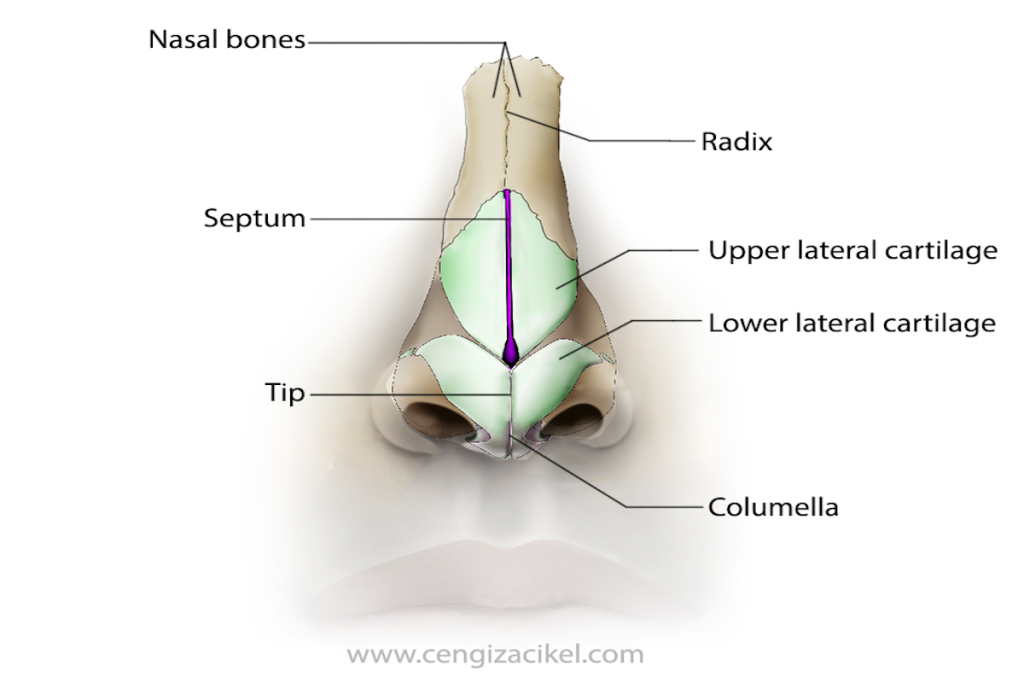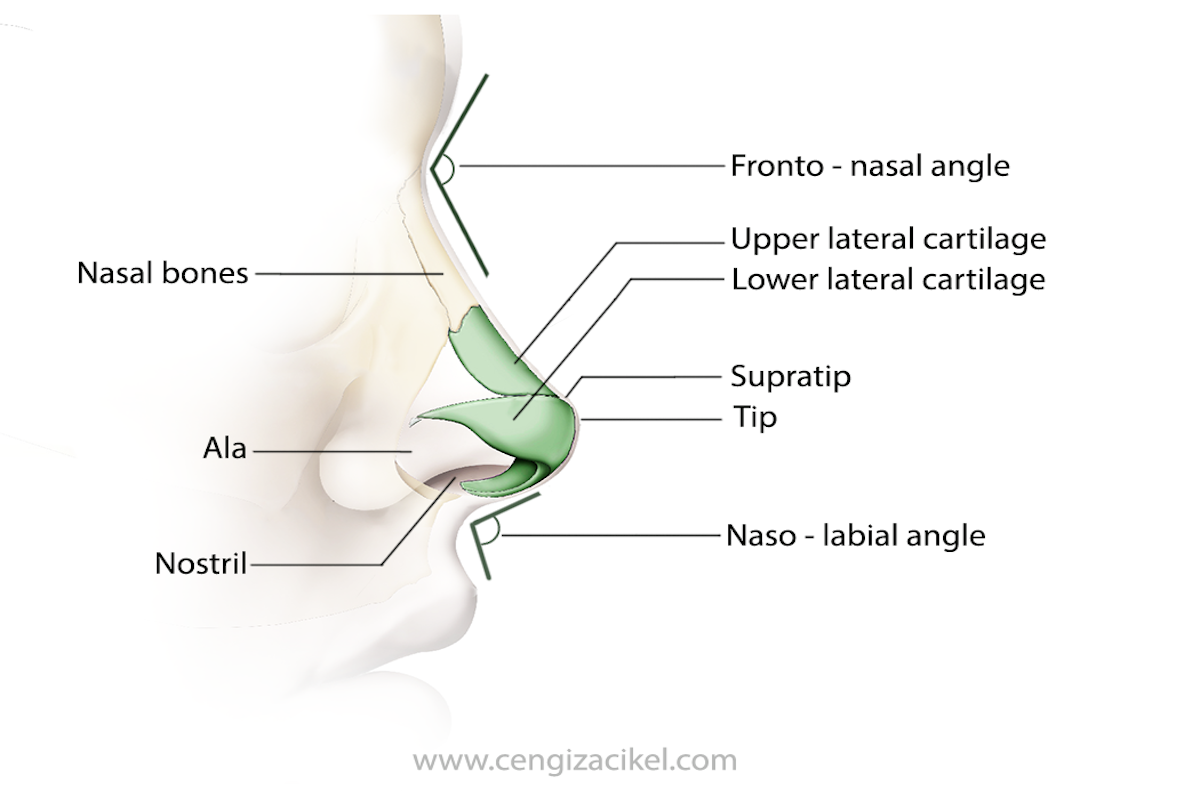Functions of the Nose
The nose, one of the most important aesthetic elements of the face, has direct effects on human health and quality of life because of its functions. Breathing is the primary function of the nose. When inhaled through the nose, unwanted airborne particles are trapped by the hairs inside the nostrils and the hairless moist structure called the mucous membrane that lines the inside of the nose; in other words, they are filtered. Filtering the allergic airborne particles in the nose, before they reach the lower respiratory tract, is a very important function.
Among the nasal functions, another important one is the adjustment of the air inhaled through the nose in accordance with the body temperature. The air inhaled through the nose is optimized for the lungs by being heated or cooled by means of the structures (conchae) and capillaries inside the nose. The air is also humidified by means of these structures. In short, the air inhaled through the nose is cleaned and humidified, and its temperature is adjusted.
Another important nasal function is the sense of smell. The olfactory function is carried out through specific regions in the ceiling of the nasal cavities, where the ends of the olfactory nerves are located. It also indirectly helps the sense of taste be of higher quality. Individuals with poor nasal olfactory function have impaired sense of taste.
The nose and surrounding sinuses contribute to both the timbre and quality of the voice during speech, and also increase its loudness. Contribution to voice quality is an unknown but important property of nasal functions. This is of great importance for singers, voice actors, and announcers in particular.
Anatomical problems causing impaired respiratory function, such as curvature of the midline partition of the nose (septum deviation) or enlarged nasal concha (concha hypertrophy) are eliminated during rhinoplasty. This makes it possible to achieve aesthetically and functionally better results.
We can summarize the nasal functions as follows:
- Nasal breathing
- Regulation of air temperature
- Regulation of air humidity
- Trapping airborne particles and allergens, and cleaning the air
- Smell (and indirect contribution to the sense of taste)
- Contribution to sound timbre and quality
References:
1- Physiology, Nasal. S. Caleb Freeman; David A. Karp; Chadi I. Kahwaji.
Anatomy of the Nose
If we summarize the anatomy of the nose in a general sense, we can say that the nose consists of soft tissue, cartilage and bone structures. When it viewed from the outside, the first structure of the nose that we see is the “nasal skin”. The thickness of the nasal skin is a factor that has direct effects on the effectiveness and success of a rhinoplasty operation.
The advantage of thin-skinned noses is that they enable the surgeon to surgically reshape the nose in more detail, but on the other hand, the noticeability of even the slightest irregularities under the skin is their disadvantage. Thick-skinned noses allow for more limited reduction rhinoplasty results and make it more difficult to aesthetically reshape the nose.
The nasal skin is thinner on the back of the nose, while it is thicker in the nasal tip, where it takes more time for postoperative edema and stiffness to subside. Under the nasal skin, there are very small muscles on the bone and cartilage structures. These muscles support respiratory functions by opening and closing the nostrils.
The main support structures that carry the nose consist of bone and cartilage tissues. The immobile upper part of the nose, which is located close to the forehead, consists of the nasal bones. The rest of the nose from the lower border of the nasal bones, including the nasal tip, is mobile and this part is supported from the inside by the cartilage structures.
When you try to move your nose between two fingers, you can see which part consists of bone (immobile) and which part consists of cartilage (mobile) structures. The lateral walls of the movable part of the nose consists of the “upper lateral cartilages”, while the “lower lateral cartilages” contribute to the shape of the nasal tip and nostrils.
The two nasal cavities extending from the nostrils to the epipharynx are separated from each other in the middle by the “nasal septum” that consists of cartilage and bone structures. The nasal septum, which functions like a tent pole, supports the nose from the inside.
On the inner surfaces of the side walls of the nasal cavities, there are “conchae” in the form of 3 shelves, colloquially known as turbinates. If the conchae that play a key role in the nasal functions are larger than normal or if the septum is crooked, these deformities cause difficulty in breathing and should be corrected during the rhinoplasty operation.
The air-filled sinuses and tear ducts around the nose also drain through the nasal cavity. If there is any anatomical stenosis or obstruction in the orifices of these channels leading to the nose, it should be eliminated.







